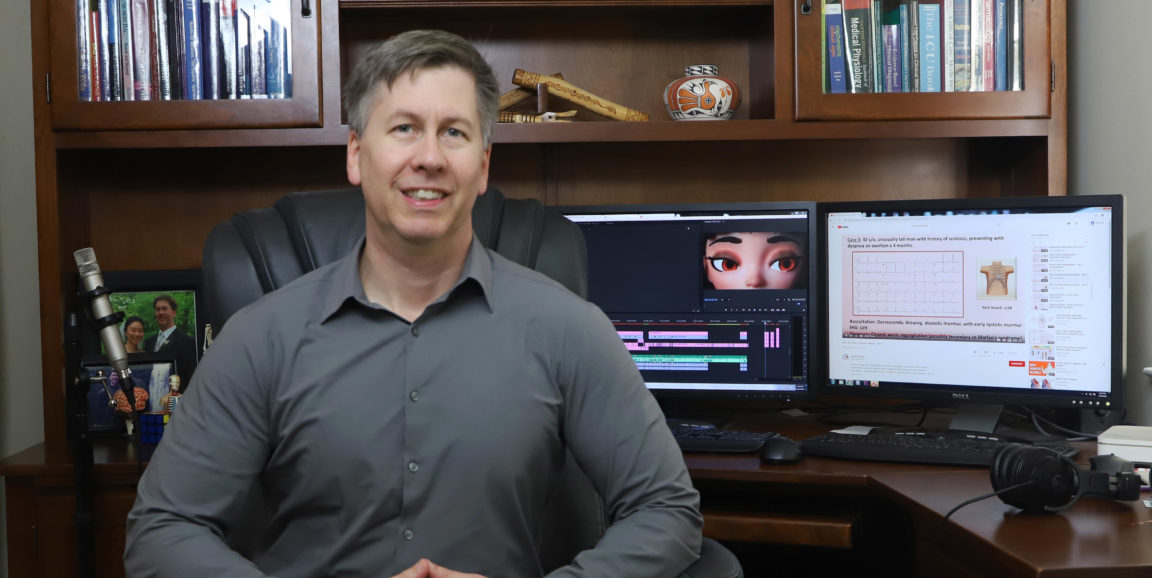Stanford internal medicine physician Eric Strong, MD, has a unique side gig as a YouTube star. His channel, Strong Medicine, has over 300,000 subscribers from all around the world, and his videos range in topic from personal medical experiences -- "My Night as an ER patient" to tips on surviving medical school.
I spoke with Strong to learn more.
Why did you decide to start producing videos?
I started about eight years ago. Many faculty give lectures to the medicine residency program and then make their lecture slides available to residents. When I was asked to give a talk, I remembered that when I was a resident I never looked up lecture slides after the fact, so I tried think of how I could make my material more engaging.
I put together a video for the talk and then the residency program didn't really have a place for it. So I thought, I'll just make a YouTube channel.
For the first couple months the videos were literally getting two views a day. But then people would come across these videos and they started asking me if I had any more content to share. It got fun, interacting with these strangers, often medical residents and students at other institutions. I started taking a couple requests and making more videos and it spread from there. I think I've averaged about two to three videos a month over the last eight years.
Has it been difficult to prioritize making the videos?
It wasn't that hard until we had kids. It's become much more challenging since then. I cut back my clinical hours to increase a little bit of bandwidth which partly was for child care but part of that was also for carving out more time for educational projects like YouTube.
How long does it take you to produce each video?
Almost every video has a script. I probably spend about one hour to produce one minute of video in general, so if I have a 20-minute video on sepsis that would be about 20 hours of work, between research, drawing diagrams and figures, writing a script, filming it and editing it. And then I have to spend some time responding to questions and comments.
Were you ever surprised to see who was watching your videos?
Some of the videos naturally are going to appeal more to a layperson and some appeal naturally more to medical professionals.
But I think the thing that's been the most surprising is where the viewers are coming from. When I first started off it was almost all United States, all relatively young adults, 18 to 25.
But over time those demographics have shifted and now the majority of my viewers come from outside the United States. Some of the countries are pretty predictable, like for example there are a lot of viewers from India.
But there are other countries, like Iraq. Iraq is this strange extreme outlier in terms of subscribers per population. Brazil, too. I was surprised by that. But that's been really great because then you get a sense that your reach has gone beyond just places that you're intimately familiar with.
Do you have a favorite video?
I think the video I put the most effort into is "Most Published Medical Research is Wrong." It argues why most published medical research is factually incorrect for a variety of reasons. I was very happy with how it brought together some of the challenges with medical research.
What are your goals for the channel?
At the very beginning I just wanted to put videos out that I thought were good quality and to help out learners as much as I could. And then there was a period of time when I thought I would cover every topic that a medical student or resident could ever need to know about and try to make this virtual medical school. But that's just not practical, so I had to scale back my ambition a little bit.
What I would really like to do is try to enlist other people to contribute content. I'm a hospitalist so I know hospital medicine really well, but I get requests for surgical topics or psychiatric topics and I can't cover that.
I would absolutely love to help faculty create that kind of content, either for my channel or their own, whatever I can do to make this a more robust resource for students and residents. People in the Stanford community should feel free to reach out.
Photo courtesy of Eric Strong




